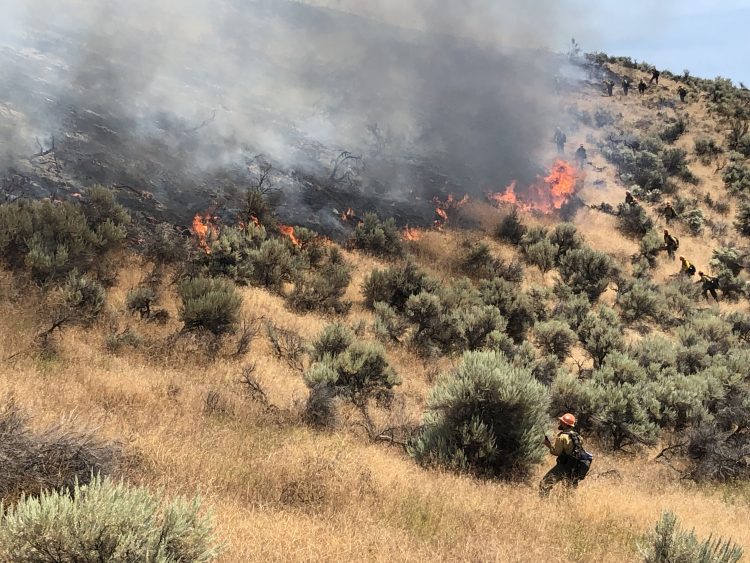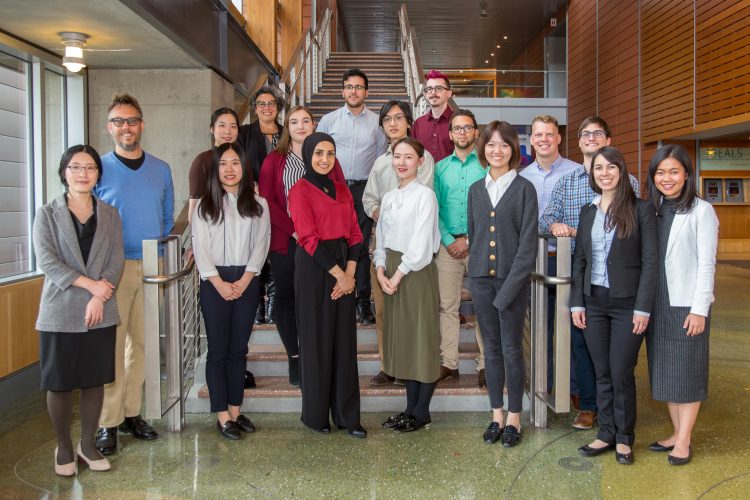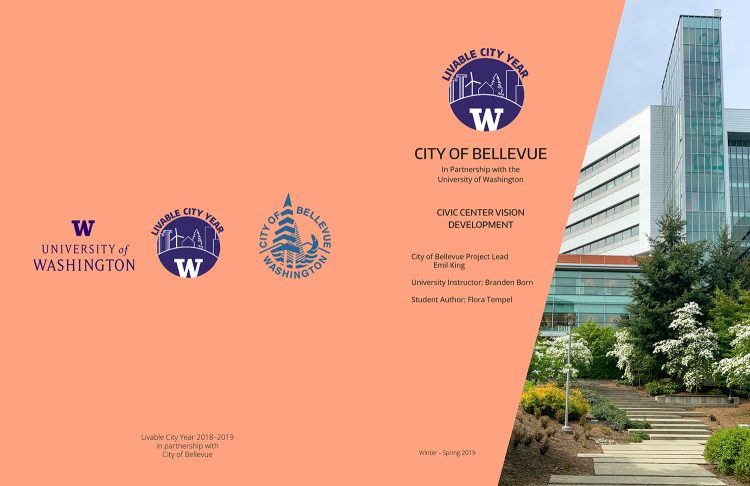New research from the University of Washington suggests those worries are unfounded. Published this month in Injury Prevention, an analysis of seven safety projects across Seattle found they had no negative impact on the annual revenues of nearby businesses for three years after construction began. The results could help city officials gather support from local business owners and remove a barrier to fulfilling Seattle’s Vision Zero pledge. | UW News
Category: Uncategorized
Lecture Recap: Planning a Resilient and Equitable Food System
On May 24th, our guest panel described the emerging food systems planning paradigms and how they are infused with values of equity, social justice, and resilience.
The Government’s Failure to Move Vulnerable People Out of Harm’s Way in the Era of Massive Flooding
Professor Dan Abramson explains the shortcomings of individual property buyouts as a response to flooding and other climate disasters that necessitate relocation. He instead suggests shifting the focus of such programs to collective aid. | Mother Jones
2021 Husky 100 | Lan Nguyen & Reese O’Craven
Congratulations to Ph.D. Candidate Lan T. Nguyễn and CEP Junior Reese O’Craven for being recognized as #Husky100 students!
Read More about Lan Nguyen
https://www.washington.edu/husky100/#name=lan-t-nguyen
Read More about Reese O’Craven
Not Quite a Block Party | Rachel Berney
Associate Professor Rachel Berney and colleagues present a comparison of Covid-19 street reallocation projects in Seattle, WA, and Vancouver, BC.
https://urbdp.be.uw.edu/wp-content/uploads/sites/10/2021/03/Not-Quite-A-Block-Party-final.pdf
A quest for Community Resilience | Bob Freitag
“We are transforming our community while remembering and recognizing our strong connection with our shore.”
Senior Instructor Bob Freitag published a paper, “Exploring a Community’s Quest for Resilience: Struggling with Past
Plans,” for the National Hazards Review.
Pandemic Brings a Change of Habit | Anne Vernez Moudon and Qing Shen
Professors Anne Vernez Moudon and Qing Shen
worked in partnership with the PSRC to show how
remote workers’ transportation, work and other
lifestyle habits changed during the first several
months of the pandemic.
https://www.washington.edu/news/2021/06/01/regional-survey-reveals-work-leisure-habits-during-the-pandemic/
A CALL FOR INCREASED CLIMATE ACTION | Jan Whittington
Professor Jan Whittington co-authored a report that was published by
the World Bank in partnership with the City Climate Finance Leadership
Alliance, “2021 State of Cities Climate Finance,” calling for an urgent
increase in funding for climate action in cities.
https://www.citiesclimatefinance.org/2021/06/new-study-calls-for-urgent-increase-in-funding-for-climate-action-in-cities/
All about balance
How a hotshot firefighter manages a demanding career and the rigors of graduate school
There are just over 100 hotshot firefighter crews in the United States. They’re part of U.S. Forest Service’s elite firefighting team, a group of specially trained professionals that fight fire in some of the most extreme conditions. During fire season, they work an intense schedule, staying on-call for 16-hour days, for 14 days straight, for about six months a year.
In the off-season, hotshots work to keep up their endurance and stay fit. Some also choose to take on other challenges outside of firefighting. Will McKinney, for instances, is earning a master’s degree in Infrastructure Planning & Management from the University of Washington.
Becoming a Student
Will, who just finished his eleventh Hotshot season, says the MIPM program was a no brainer.
“I came to the realization that if I stay in firefighting, hotshot is [where I want to be],” Will shared. But it’s a really hard lifestyle and the physical labor made me realize I need something else – year round work. How can I use my fire experience so I can grow in another direction?”

One of the biggest challenges for anyone balancing a career and school is finding time to study. It takes creativity and the right team to create a personalized plan. Part of the strength of the Department of Urban Design and Planning’s two-year, part-time, online graduate degree is the flexibility of the program. MIPM can often be tailored to the individual student, regardless of situation.
Will reached out to the department’s academic director, Wendy Freitag, before enrolling. He shared his job, schedule, and goals, and together, they came up with a way to customize the program so Will could earn his master’s.
Making it work
Fire season can be unpredictable. If it starts early or runs late, Will has to put his studies on hold, take an incomplete grade or work double-time to catch up. What’s more, there are no breaks in fires. Will says major fires are now back-to-back-to-back.
“‘Fire season’ is now a ‘fire year’ because there are so many big, destructive fires outside the season.”
Resources, including the number of firefighters available, are limited. That puts stress on crews and puts more land in danger. “We have fewer ‘slow’ years and we don’t have the resources to fight the more difficult fires.”
During fire season, Will keeps in touch with his professors and program administrators so they’re aware of his situation and whether he’ll be able to start classes on time. Will says the availability of UW’s faculty and staff, the ability to accommodate a non-traditional work schedule and the quality of education make UW’s program stand out among other online programs.
Joining the team
Will took the advice of a friend and got certified as a firefighter. He was drawn to a job that required physical fitness and teamwork. In 2006 he started firefighting on what’s called a Type 2 team. These teams focus on fire suppression and fuels management. It’s been go, go, go for Will ever since. “I applied; the next week I was working, and two days later, I was at a fire.” Soon after, he applied to be a hotshot.
The federal government established hotshot crews in the 1940s to fight fires in Southern California’s Cleveland and Angeles National Forests. The hotshot teams work in the hottest part of the wildfires. They are trained to handle the strategic and tactical aspects of firefighting.
Looking to the future
Will says he’s seen a lot of change in the time he’s been on the job. “The way we engage fire has completely changed. The old way was to put every fire out. Now, fire is so intense that we just can’t do that,” he explained. He says teams are looking at how they manage fire. They even use it as a tool through prescribed burns. This subsequently decreases the amount of underbrush and other material that feeds wildfires near communities.
“It’s not sustainable to put all the fires out. Some areas need fire so there’s less fuel, and when they do burn, it’s not so intense that we can’t put it out.”
Will hopes to combine this practical, hands-on experience with his master’s degree to build a future career. He says, “The cool thing about MIPM is that it exposes you to so many different realms. I haven’t decided which direction to go, but I want to use my knowledge of fire in some capacity along with what I’ve gotten from MIPM in planning.”
ADDITIONAL LINKS:
> To learn more about the Masters in Infrastructure Planning and Management Program (MIPM) program, visit the MIPM website.
LCY Bellevue Civic Center Project Wraps Up
Master of Urban Planning (MUP) Studios – Livable City Year, Bellevue

Recently, students of the LCY Bellevue Civic Center Vision Development studio released their final report. Led by Professor Branden Born, these planning students joined nearly 300 of their fellow classmates across UW during the 2018-19 academic year. Together they collaborated with City of Bellevue staff on various projects. Ultimately, the goal of this collaboration was to develop ideas that could help advance the City Council Vision document. Subsequently, many projects focused specifically around livability and sustainability.
Civic Center Vision Development Studio
This planning studio explicitly focused on exploring and refining concepts for a connected Civic Center. The site of the proposed Civic Center is centrally located. Its adjacent to Bellevue City Hall, the new East Link light rail station, and the Meydenbauer Center. Most importantly, the new Civic Center would function as a hub of community activity in Bellevue. Additionally, it would create a place of grounding and community connection in a space that presently lacks these qualities. Generally speaking, Bellevue’s downtown core was not built to correspond to human scale. One key goal of this studio was to create a public space created specifically to welcome people to Bellevue.
To begin with, students developed an analysis of the site. Next, they investigated case studies from around the world. Finally, they created different design alternatives to present to the City. The three student teams developed their designs with attention to one of three different core values:
- The first team focused on “Intimacy” and applied a green infrastructure lens
- Team two created a “Civic Home” with a focus on housing
- The third team developed a “Cultural Center” that developed economic potential on the site
The Final Report
In conclusion, the comprehensive report includes the student’s findings, and ultimately key recommendations for developing the site. These recommendations by and large propose innovative ways to fully integrated the Civic Center into the fabric of Bellevue’s downtown core. Ultimately, this plan will be used by the City to help generate new ideas and spark innovation around the possible future for this site..
CIVIC CENTER VISION DEVELOPMENT REPORT

ADDITIONAL LINKS:
> To learn more about the Master of Urban Planning (MUP) program, visit the website here.
> To learn more about the Livable City Year (LCY) program, visit the LCY website.
“Making Local Impact”, June 2019
Livable City Year Blog
“Livable City Year concludes partnership with City of Bellevue”, February 7, 2020